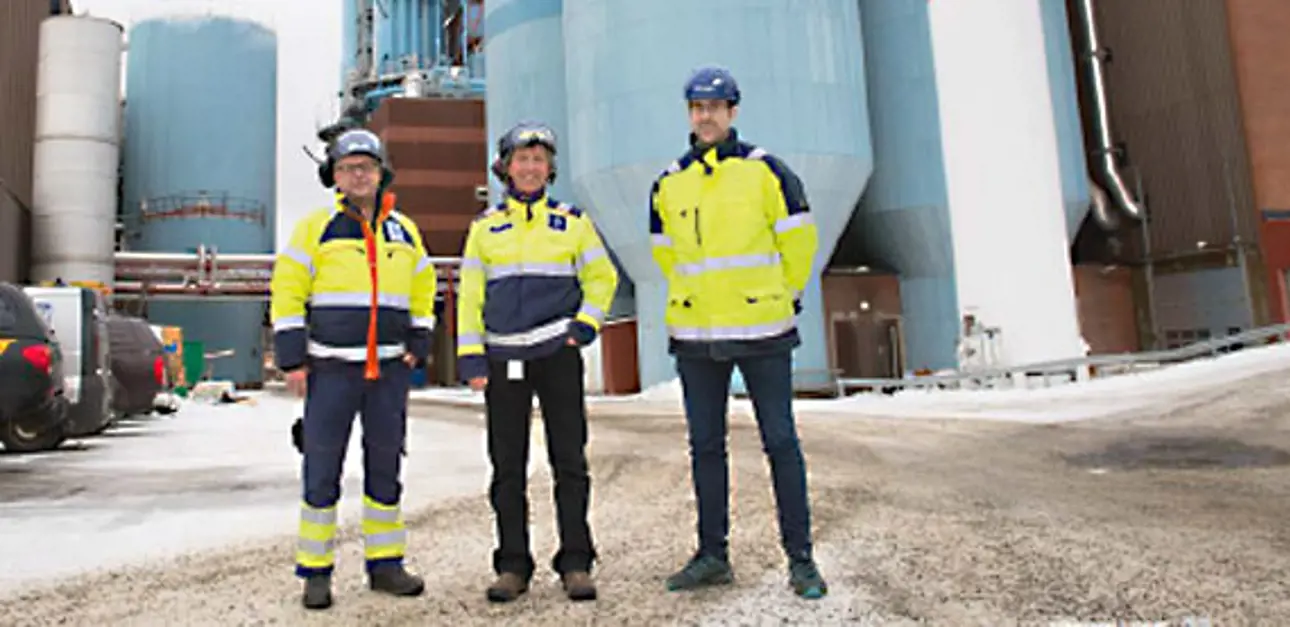Thorough training, rapid start-up
Sep 9, 2016
When a new continuous cooking plant was installed at the SCA Obbola mill in Sweden, simulator training was an important part of the project. It made a very rapid start-up possible.

The background to SCA Obbola’s cooking plant project was that the existing batch cooking plant from 1962 had corroded digester vessels and required a lot of maintenance. “We were in a situation with only two options: we had to either replace these vessels or build a new cooking plant,” says Erik Olsson, Project Manager of the cooking process.
“We finally chose a new CompactCooking G2 plant from Valmet. It was by far the best in terms of energy consumption, and it also includes the possibility of a future capacity increase, which is very important. We have tried to secure for the future both in terms of capacity and process-wise. The cooking plant will hopefully stand here for 60 years, so we do not want to find ourselves in a position where it is too small,” Mats Persson, Project Manager for the cooking project, continues.
Both the pulp quality and the working environment have improved. “The most noticeable thing in terms of quality is that we now have better tear strength,” says Olsson. In terms of noise, the working environment has become much better. Resonance sounds have largely disappeared, and also the smell is gone.
A new production record achieved
On October 21, 2015 the new cooking plant started up. The start-up went well, and within the first 24 hours pulp of the right quality went all the way through the fiber line and on to the paper machine. A new record in daily production was set after five days. Persson comments: “One indicator of the fast start-up was that we switched over to advanced process control very soon after the start-up.” Olsson agrees: “After two days, we had almost all the circuits in the advanced process control (APC) system in operation. Then there was some fine-tuning before we had optimal functioning, but it was fast.” “Under the best operating conditions, we have kraft pulp production of between 700 and 800 tonnes. We are now trying to find the conditions where everything runs stably throughout the plant. It is still a challenge to find a good mill-wide operating strategy, but it is getting better and better,” says Olsson.
Online training

As continuous cooking was new to everyone, extra effort was put into training. A total of 144 people took part in the online training, focusing on basic knowledge of the new equipment. “Everyone involved in maintenance and all employees in production participated. It did not cost so much in working hours compared to what we gained by letting everyone take part,” Persson explains. The training was conducted in several steps, starting with mapping the skills and knowledge of all the operators to determine what they already knew. The online training in WebAcademy is based on independent study where participants log in, go through the material and take tests when they have the opportunity, and as many times as they wish. “The training ended with a test that all the operators had to pass. I liked the set-up, which gave us a good understanding of the equipment,” says John Eik, Operator. “The material is still being used. Operators frequently log in to check the material when they want to know how something looks or how it works in principle. Also, some new operators have taken the training,” Olsson continues.
Realistic simulation greatly appreciated
The classroom training consisted of a general component for managers as well as in-depth, hands-on training, where the operators themselves had to practice under the guidance of Valmet trainers. “The trainer was very competent. Few courses I’ve taken have been so well articulated. We got answers to all our questions,” says Eik.
Simulator training with VirtualSite was also included – and greatly appreciated. “Several aspects of the simulator training were good. First, we basically got to do a proper check-out in advance. Secondly, the joint factory acceptance test (FAT) was very rewarding. Both the distributed control system (DCS) and advanced process control (APC) were tested with the simulator. It was an incredibly important test in which we found several issues, much more than is possible with a traditional DCS FAT. Now we were able to address these issues before start-up,” explains Olsson. “The simulator also allowed us to tune the proportional–integral–derivative (PID) controller in the DCS in advance. We estimate that we saved about two or three weeks in start-up time on this, and some things might not have been solved as easily when the plant was operating,” Persson continues.
Dedicated system superusers have learned to manage the simulator and will, in case of disturbances, be able to create customized exercises so that others also can learn. The simulator will continue to be used for training new staff and summer employees. “The simulator gives you realistic training on starting, stopping and slamming on the brakes. The fact that the operators voluntarily run the simulator is the best grade you can get,” says Olsson. John Eik confirms: “The simulator is realistic, and you know that one day you will have to start up the machinery after, for example, a power failure. Then it is good to know what to do.”
Training time extended
Before the project started, the project team visited other mills to share their experiences. As a result of that, the training time was extended in connection with the start-up. “A month is too short for this kind of process. Operators meet the trainer for one to two weeks during the baby-sitting period, depending on how the shifts are set. During that time, it may also be that they are busy just trying to get the plant going. We really do understand the importance of taking the time for proper training. It has been a success for us,” Persson concludes.